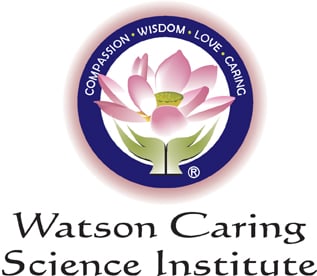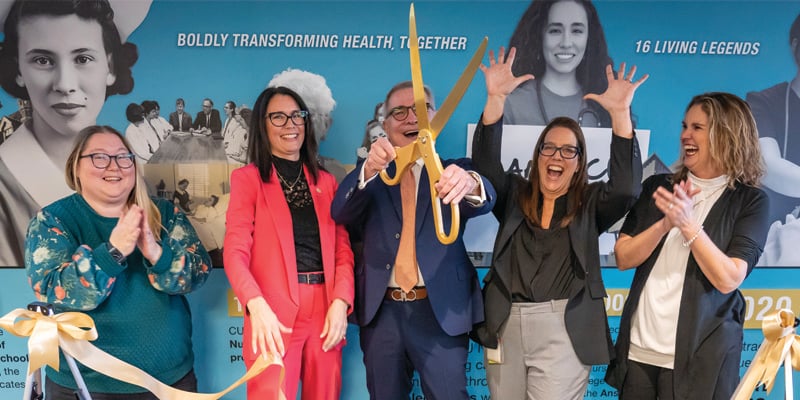By 1973, the University of Colorado School of Nursing had established credibility as the birthplace of the nurse practitioner – a concept that proliferated in more than 65 nursing schools around the country. One publication ranked CU Nursing as the fifth best nursing school in the United States. The school added more master’s courses in its curriculum and enrollment continued to grow.
To celebrate its 75th year, the school held a dinner honoring distinguished alumnae including: Ruth Colestock, Loretta “Lee” Ford, and Henrietta Loughran. During the celebration, CU Nursing Dean Kathryn M. Smith called out the school’s many success stories and set the stage for an even brighter future. Yet, only one month later, Smith announced her resignation effective at the end of 1974. The resignation ended Smith’s nine-year run as dean.
Despite impressive accomplishments and growth from the previous 25 years, CU Nursing had its share of challenges: Insufficient space limited informal gatherings, and heavy teaching loads contributed to high faculty resignation rates for several years. While enrollment had increased by 50 percent during Smith’s tenure, there was no increase in faculty members. Meanwhile, salary inequities were widespread.
University-wide, there was conflict among students, faculty, and administration over myriad issues, as well as student protests over the war in Vietnam. Amid the turmoil, two CU presidents resigned over a five-year period after failing to establish peace on the campus.
Transitional years
In 1975, Barbara Darlien Klug Redman, a 38-year-old associate dean from the University of Minnesota, accepted the role as Dean of CU Nursing – ushering in what seemed to be a more optimistic era for the school.
Redman aspired to accelerate research activity and implement doctoral programs. A divided Colorado Commission on Higher Education approved CU Nursing’s first doctoral program in mid 1978. By the fall of that year, the school admitted two doctoral students and received a five-year, $455,000 grant from the National Institute of Mental Health.
While it may have seemed that the school was turning a corner under Redman’s leadership, she resigned not long after the doctoral program was approved.
Budgetary challenges, high turnover among leadership and faculty, and increased scrutiny over the doctorate programs continued to characterize the late 70s and early 80s at CU Nursing.
The ‘caring science’ era
After a difficult period, CU Nursing began to enter what is now regarded as something of a “golden age” led by Jean Watson (PhD ’73), who is renown throughout the world for her theory of human caring.
Watson’s theory asserts that caring is a fundamental component of nursing that is essential for both the patient and the nurse. The theory emphasizes the importance of presence, attention, and intentionality in providing holistic care.
Appointed dean in the fall of 1983, Watson was the youngest in a family of eight children. After earning her diploma at the Lewis-Gail Hospital School of Nursing in Roanoke, Va., she earned her baccalaureate in nursing from CU Nursing in 1964. Additionally, she earned a master’s degree in psychiatric-mental health nursing in 1966, and a doctorate in educational psychology and counseling in 1973. Over the years, Watson served in various roles at the school.
In 1979, Watson published her first book, “Nursing: The Philosophy and Science of Caring” to explore the discrepancies between nursing theory and practice. In 1981, she was admitted as a fellow in the American Academy of Nursing, awarded a Visiting Kellogg Fellowship for study in Australia. She served as dean of CU Nursing from 1983 to 1990.
During a March, 2023 interview, Watson said she reluctantly accepted the deanship because she saw so much unrealized potential in CU Nursing. Under her leadership, she doggedly pushed research, and refined CU Nursing’s doctorate program. In 1986, Watson established the Center for Human Caring, a concept which aimed to promote a more interdisciplinary, philosophical-theory-guided compassionate approach to patient care.
Among other innovative programs, CU Nursing formed partnerships with local hospitals and University of Colorado to establish the Denver Nursing Project in Human Caring, which supported people with AIDS or HIV.
“It was a clinic at the Denver VA hospital that was totally community-oriented and guided under my theory,” Watson said. “It was initiated because at the time the AIDS population was being hospitalized inappropriately. We listened to the people and provided whatever they wanted – whether it was exercise physiology, nutrition, healing touch, massage, or group therapy. It was totally interdisciplinary, and we were able to demonstrate that we saved over a million dollars every year by hosting that program.”
A former CU Nursing faculty member and a respected authority on caring science herself, Marlaine Smith, RN, PhD, praised Watson’s influence at CU Nursing and globally during a keynote presentation at CU Nursing’s PhD Intensives earlier this year.
“She’s certainly a transformational leader who brought her vision of caring to the (school),” Smith said. “Jean invited faculty associates, poets, and all kinds of physicians and healthcare leaders to join in what became an epicenter for human caring. It was really a think tank where faculty from within the college and outside the college gathered to talk about projects that could advance teaching research practices.”
While there were some detractors to her approach, Watson’s deanship is generally viewed as a positive and productive period in CU Nursing’s history.
“I’ve had faculty tell me that it was like Camelot when I was dean,” Watson said. “For me, it was great fun. It was challenging in terms of what we were doing, but I had good support from the chancellor. Even when we didn’t always agree, we agreed to disagree. So, it was really a very collaborative, exciting, and creative time. And faculty thrived. We were No. 5 in the country for research funded by the National Institutes of Health. That’s pretty special, and we haven’t gotten back there since.”
“I’ve been told that something like 300 hospitals use my work, so it’s had kind of a life of its own. But the thing is, it’s not my work – it’s nursing. I’m just giving a voice to nursing. I haven’t done anything original. I’ve just provided a language, and a philosophical and scientific framework that holds it together and makes it understandable.” – Former CU Nursing Dean Jean Watson, PhD ‘73
However, Watson had larger aspirations for caring science and didn’t really want to be a dean. While she remained on the faculty with CU Nursing after resigning, her influence on the school faded over time – even though her legacy lives on.
“Every time a new dean came – and about six came and went after I left – the dean didn’t want to build on my caring science agenda,” she said. “They wanted to build on their own agenda. There were some attempts to sustain it, but it just disintegrated because we didn’t have any more people doing the scholarship at the doctoral level in caring science.”
|

Watson Caring Science Institute |
Though caring science is no longer a major emphasis in CU Nursing – and Watson is no longer officially affiliated with the college, her research and scholarship on caring has been embraced by hundreds of nursing schools and healthcare facilities around the world. While CU Nursing still offers a PhD in Nursing in Caring Science, and the movement has proliferated worldwide.
“I’ve been told that something like 300 hospitals use my work, so it’s had kind of a life of its own,” Watson said. “But the thing is, it’s not my work – it’s nursing. I’m just giving a voice to nursing. I haven’t done anything original. I’ve just provided a language, and a philosophical and scientific framework that holds it together and makes it understandable.”
In 2013, the American Academy of Nursing honored Watson as a “Living Legend” in nursing. One of the largest healthcare delivery systems, Kaiser Permanente, Northern California has implemented Watson’s theory in California for many years. Likewise, Stanford Health Care is one of the Distinguished National Caring Science Affiliate of Watson Caring Science Institute. Watson is the recipient of 16 honorary doctorates – including 13 internationally. She also held the title of Distinguished Professor of Nursing; the highest honor accorded to CU Nursing faculty for scholarly work.
Putting it all together
When Watson’s successor, Dr. Juanita Tate, suggested honoring CU Nursing’s past by opening a Nursing History Center at a new research building, the idea gained momentum. Dedicated in 1993, the center preserves countless records, documents, books, photographs, nursing relics and other artifacts throughout the ages.
Of course, many deans, faculty, students, and curriculum have come and gone since the Nursing History Center opened. Indeed, the center itself has changed locations (currently, it’s housed in the fourth floor of Building 2 at the Anschutz Medical Campus).
But an institution of higher learning is larger and more resilient than people, places, and even ideas. To quote CU President George Norlin’s address from 1935:
“The university is not the campus, not the buildings on the campus, not the faculties, not the students at any one time – not any one of them. The university consists of all who come into and go forth from her halls, who are touched by her influence and who carry her spirit.”
When applied to CU Nursing and its history, those words resonate as much now as they did then.
The final part of this series will cover 1998 to 2023, including the move to Anschutz Medical Campus, the growth of the nurse-midwifery program and the COVID-19 pandemic.



